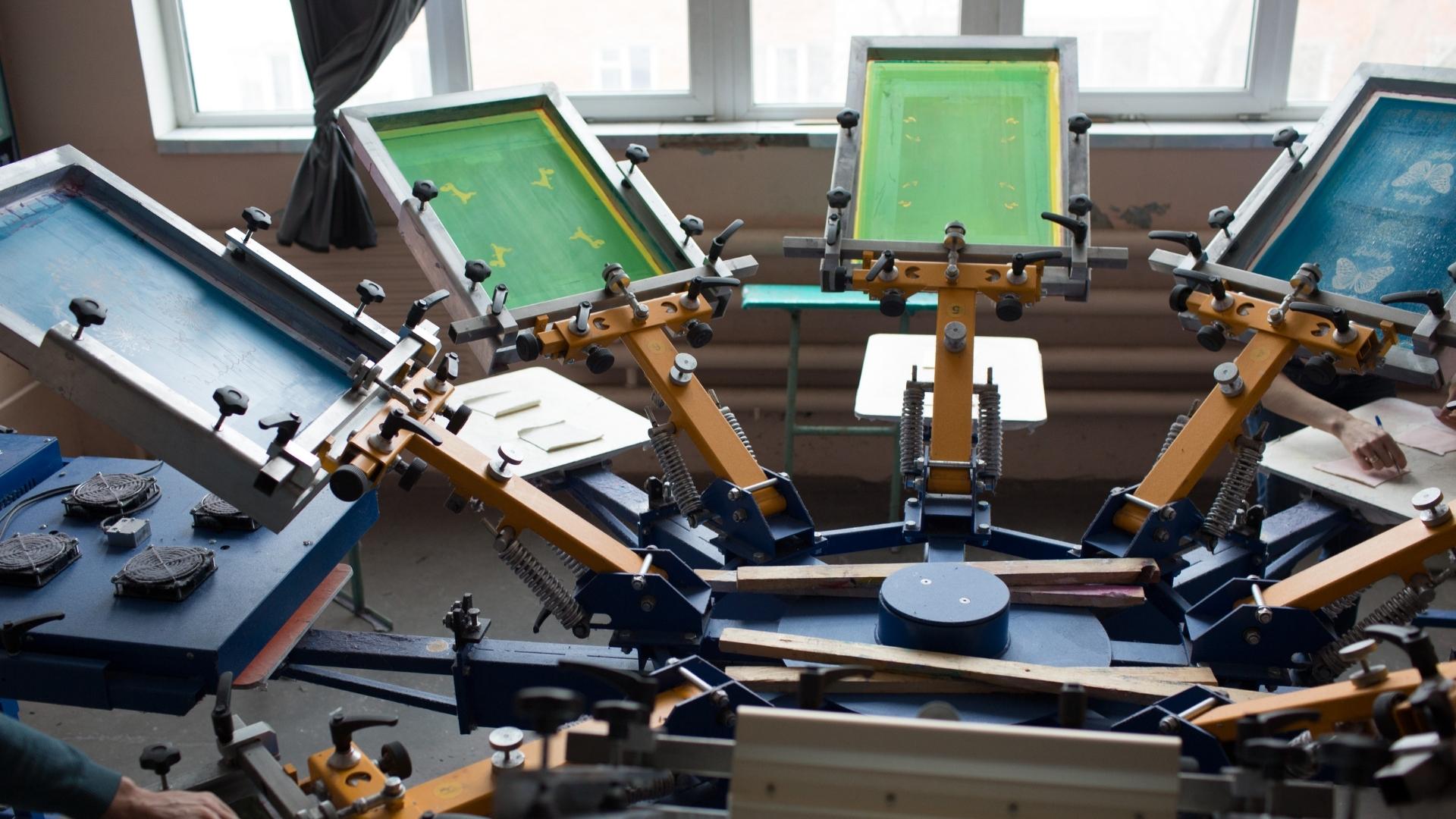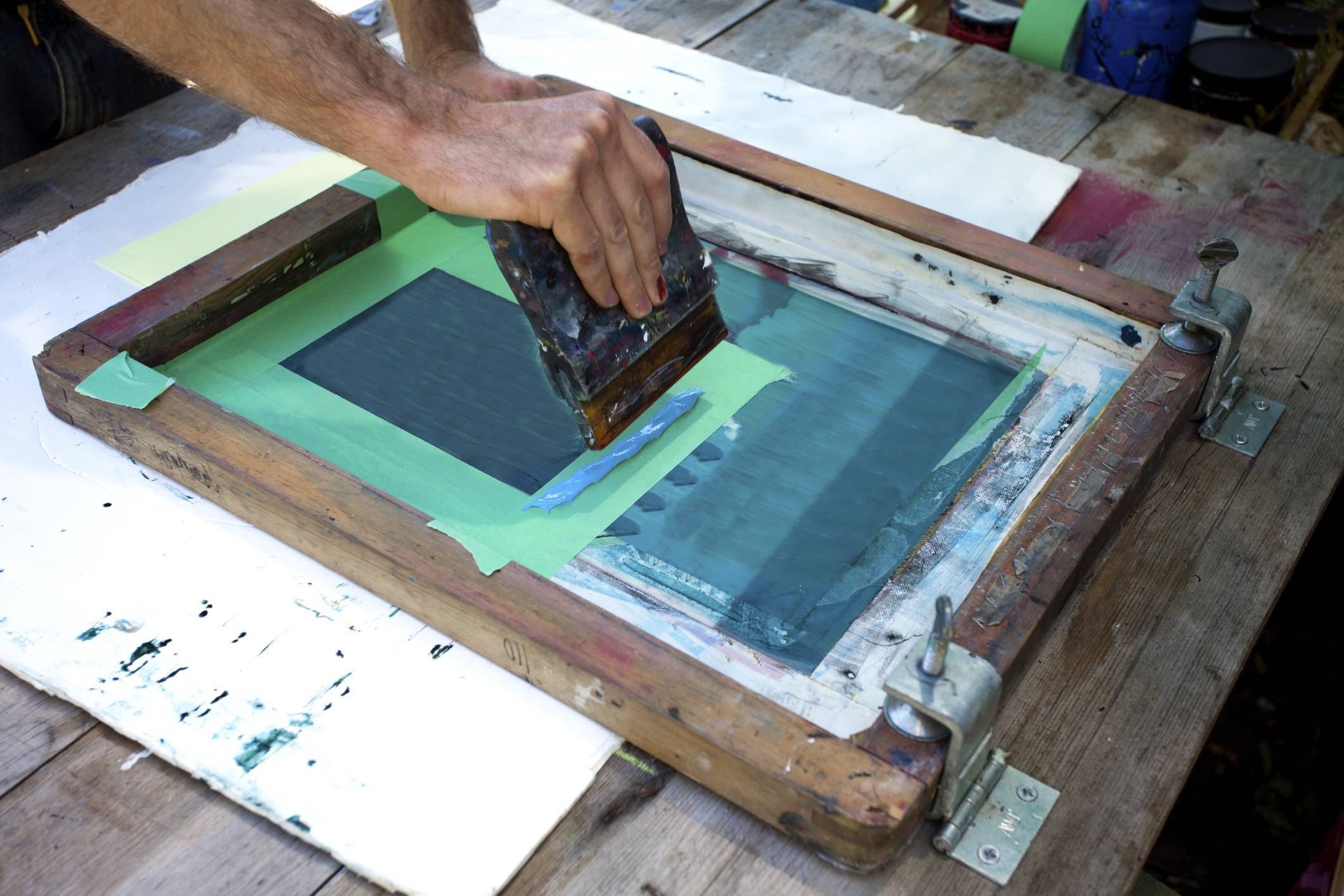From Design to Shipment: Grasping the Art of T-Shirt Screen Printing
The trip from design to shipment in t-shirt screen printing incorporates a collection of important stages that demand interest to information and strategic planning. It begins with comprehending the subtleties of your target market, followed by the selection of suitable products and the prep work of art work that meets high requirements. As the process unfolds, difficulties in high quality control and logistics can develop, possibly influencing the last end result. Discovering these intricacies discloses not just the intricacies of screen printing but also the vital methods that can raise a brand's standing in an open market.
Comprehending T-Shirt Screen Printing
Comprehending T-Shirt screen printing includes acknowledging a flexible and widely used technique for moving layouts onto textile. This strategy uses a mesh and a stencil screen to apply ink onto numerous fabric products, primarily cotton and polyester blends. The process begins with the production of a display that includes the preferred design, which is after that carefully aligned on the material.
Ink is pushed with the screen's open areas making use of a squeegee, enabling for exact application of color. This method is preferred for its capacity to create vibrant, long-lasting prints that stand up well to washing and wear. In addition, screen printing is qualified of fitting both simple and intricate layouts, making it a recommended option for custom garments, marketing items, and even artistic jobs.
Furthermore, screen printing supplies scalability, making it appropriate for both tiny batch orders and large productions. While preliminary setup prices may be greater contrasted to other printing approaches, the efficiency and sturdiness of screen printing often validate the financial investment. Generally, recognizing the principles of Tees screen printing is vital for anyone seeking to participate in this popular type of textile decoration, whether for individual tasks or commercial ventures.
Conceiving Your Layout
Conceptualizing your design is a crucial action in the T-shirt screen printing procedure, as it sets the structure for the whole task (Business Branding Services). This phase involves producing concepts that resonate with your target audience while making certain that the style aligns with the brand name's identity and message. It is necessary to start by discovering motifs, color plans, and graphics that reflect the desired aesthetic
Mapping out preliminary principles can be helpful, enabling for a graph of ideas prior to wrapping up the layout. Consider making use of typography, images, and format in a manner that captures focus and communicates efficiently. Furthermore, it is important to anticipate the printing method that will certainly be utilized, as this can influence design complexity and shade selections.
Participating in brainstorming sessions with team participants or seeking feedback from prospective consumers can also improve the concept process, offering diverse perspectives that fine-tune the style. Inevitably, a well-balanced design not only boosts the visual charm of the T-shirt however likewise cultivates a connection with the audience, driving passion and possible sales. Consequently, dedicating time to conceive your design can lead to an effective screen printing end result.
Selecting the Right Products

The weight of the material, commonly measured in grams per square meter (GSM), affects the drape and general feeling of the T-shirt. Heavier textiles might give an extra superior appearance, while lighter choices fit for casual wear. Appearance also contributes; smoother fabrics often tend to generate sharper prints, while distinctive surfaces can create unique aesthetic effects.
Furthermore, take into consideration the ecological impact of materials. Organic cotton and recycled polyester are getting appeal among eco-conscious consumers. Inevitably, choosing the right products includes stabilizing aesthetic charm, functionality, and sustainability, making sure that the Tees not only looks great but likewise fulfills the expectations of your target market.
Preparing Art Work for Printing
Preparing artwork for T-shirt screen printing calls for mindful focus to detail to ensure that the last print accurately mirrors the intended design. The primary step is to produce a high-resolution electronic data, ideally in vector style, as this enables for scalability without loss of quality. Common software program made use of for this purpose consists of Adobe Illustrator and CorelDRAW.
Next off, confirm that all message is transformed to outlines or rasterized to stay clear of font issues throughout printing (Abilene T-Shirt Screen Printing Company). Furthermore, it is important to validate that the color mode is readied to CMYK, as this straightens with the printing process. Pay close attention to shade matching; using Pantone colors can help accomplish consistency across various prints
Think about the measurements of the print area and keep appropriate margins to prevent design cutoff. It's additionally important to consist of registration marks for placement during the printing procedure. Business Branding Services. Request an evidence from the printer to picture the last item before mass manufacturing. This step is important for identifying any kind of potential problems, guaranteeing that the published Tee shirts fulfills the desired high quality and style requirements. Correct prep work of artwork significantly affects the total success of the screen printing project
Grasping the Printing Process
Understanding the printing process is important for attaining top quality lead to Tees screen printing. This phase involves several substantial steps that directly affect the end product. The initial step is establishing the printing press accurately. Proper registration of screens warranties that colors align appropriately, protecting against misprints and ensuring a professional appearance.
Next, picking the best ink is important. Different ink kinds, such as plastisol or water-based, offer various finishes and sturdiness. Recognizing the material structure of the T-shirt also helps in choosing suitable inks.
Controlling the squeegee pressure and angle is critical when it comes to the real printing. Consistent stress will yield even ink circulation, while the angle affects the flow and coverage. Additionally, adjusting the rate of the printing machine can affect the ink's treating process, which is essential for ensuring longevity.
Top Quality Control and Finishing
After the printing process is complete, executing efficient top quality control steps becomes important to verify that each T-shirt meets the preferred standards. Quality control includes a methodical technique to examining each garment for problems, confirming that the print quality, color precision, and textile integrity line up with the specifications set during the design stage.

The very first step in quality assurance is an extensive visual assessment. This entails monitoring for typical issues such as misalignment, ink spots, or fading. Any kind of Tee shirts that does not satisfy the quality standards need to be addressed promptly, either through reprinting or repair work.
In addition to aesthetic checks, it is very important to perform clean examinations on an example of printed t-shirts to examine the durability of the inks and the general longevity of the style. These tests help verify that the print will keep its vibrancy and integrity after several washes, a vital element for consumer fulfillment.
Finishing touches, such as thread trimming and the application of care labels, likewise play a significant role in quality assurance - Screen Printing. By concentrating on these facets, businesses can enhance the overall presentation of their items, inevitably bring about a much more rewarding consumer experience
Product Packaging and Distribution Solutions

To achieve excellent product packaging, think about utilizing environmentally friendly materials that line up with sustainability fads, such as recyclable poly bags or naturally degradable boxes. Each Tee shirts must be neatly folded up and placed in protective wrapping to avoid creasing and prospective damage throughout transit. Including a top quality insert or care directions can better individualize the experience, fostering consumer commitment.
Picking a reliable delivery companion is necessary when it comes to delivery. Examine options based upon tracking, price, and speed capabilities. Using multiple shipping techniques can provide to various client requirements, from basic to expedited shipping.
Often Asked Questions
What Are the Common Mistakes Newbies Make in Screen Printing?
Usual errors newbies make in screen printing consist of incorrect screen preparation, poor ink blending, incorrect exposure times, not enough healing, and neglecting to evaluate prints. These errors can lead to low quality and unacceptable cause end products.
How Can I Avoid Ink From Blood Loss During Printing?
To avoid ink bleeding throughout printing, assurance appropriate screen stress, use ideal emulsion thickness, choose the right ink uniformity, preserve optimal treating temperature levels, and prevent overloading the screen with too much ink during application.
What Kinds of Inks Are Finest for Various Fabrics?
Picking inks based on fabric type is vital. Water-based inks are excellent for cotton, offering softness. Plastisol inks suit synthetic materials, using resilience. Discharge inks effectively mix with all-natural fibers, making certain vibrant shades without compromising textile stability.
Just how Do I Pick the Right Screen Mesh Matter?
Picking the right screen mesh matter depends upon the preferred print detail and ink type. Abilene T-Shirt Screen Printing Company. Greater mesh counts produce better details, while lower matters assist in thicker inks. Evaluate material kind and design intricacy for perfect outcomes
Can I Use Screen Printing for Tiny Batch Orders?
Yes, screen printing can be properly used for tiny batch orders. This approach enables comprehensive styles and high-quality results, making it a practical choice for personalized clothing, marketing products, or restricted edition runs.
Comprehending T-Shirt screen printing involves identifying a functional and extensively made use of technique for transferring designs onto material. While initial setup prices might be greater compared to other printing approaches, the effectiveness and sturdiness of screen printing frequently validate the financial investment. Preparing art work for T-shirt screen printing requires cautious attention to information to guarantee that the last print properly reflects the desired layout. Mastering the printing process is vital for attaining high-quality results in T-shirt screen printing. Common errors beginners make in screen printing consist of inappropriate screen preparation, insufficient ink mixing, inaccurate direct exposure times, not enough curing, and neglecting to examine prints.